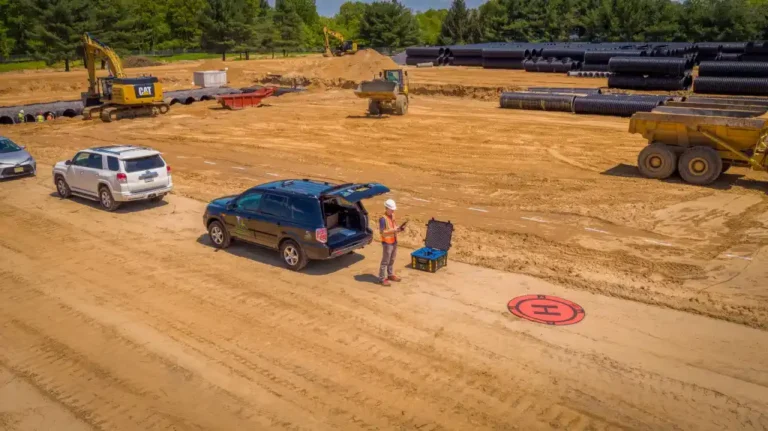Surveying and mapping are essential to every phase of a construction project, from choosing a site to planning excavation. Traditional methods remain effective but are often slow, labor-intensive and limited in coverage. Drone-based surveying is changing how teams capture and apply land data. Institutions like Sonoran Desert Institute (SDI), accredited by the Distance Education Accrediting Commission (DEAC), offer foundational education in Uncrewed Aerial Systems (UAS), preparing students to operate drones and understand aerial data within a variety of technical fields.
As drone adoption grows, their role in early-stage planning becomes increasingly relevant. Surveying is not just about mapping boundaries; it’s about generating reliable geospatial information to support design and engineering decisions. While SDI’s programs do not focus specifically on land surveying for construction, they equip students with the essential knowledge of drone systems, sensors and remote sensing that can serve as a stepping stone toward more specialized geospatial applications.
The Role of Surveying in Construction Planning
Before construction begins, surveyors must gather critical data about the land’s surface, including elevation, slope, boundaries and potential obstacles. Accurate surveys help engineers and planners make informed decisions regarding building orientation, drainage systems and earthworks.
Traditional surveying relies on tools like total stations, GPS rovers and physical benchmarks. Though proven, these methods can take days or weeks to complete, particularly on large or complex sites. Environmental conditions, terrain challenges and labor shortages can further slow the process and increase the potential for human error. Drones, on the other hand, can scan and map vast areas in just a few hours. Their ability to fly low and follow pre-programmed flight paths ensures consistent, repeatable data collection from above.
How Drone Surveying Works
Drone surveying involves flying over a designated site while collecting thousands of geotagged images. These images are later processed using specialized software to create detailed topographical outputs.
Key elements include:
- Photogrammetry is the process of stitching 2D images into 3D maps or orthomosaic images, offering precise distance and elevation data.
- LiDAR (Light Detection and Ranging): A laser-based system that measures distances by bouncing pulses off surfaces. LiDAR-equipped drones can penetrate vegetation and capture accurate elevation models even in wooded or rough terrain.
- Real-Time Kinematic (RTK) GPS: Advanced positioning systems used with drones for centimeter-level accuracy during mapping missions.
Together, these technologies generate accurate Digital Terrain Models (DTMs), Digital Surface Models (DSMs) and contour maps that support critical decision-making in early construction planning.
Benefits of Drone Mapping in Site Selection
Choosing the right site for construction is one of the most important decisions in a project. Drones help identify ideal locations faster and more accurately than traditional surveys.
Assessing Land Suitability: Drones can quickly scan multiple potential sites, capturing elevation, slope angles and natural features. It allows developers to compare locations based on buildability and environmental impact.
Identifying Hazards and Obstructions: Detailed imagery and models reveal hidden obstacles such as sinkholes, uneven terrain or unstable soil conditions that might complicate construction.
Speed and Accessibility: Remote or difficult-to-access areas can be surveyed by drone without requiring boots on the ground, improving safety and reducing delays in the preconstruction phase.
Enhancing Grading and Excavation Planning
Proper grading and excavation are critical for drainage, foundation stability and site layout. Drone-generated maps provide the high-resolution data needed to plan these operations more confidently.
Volume Calculations: Drones can capture elevation data, enabling accurate calculations of cut and fill volumes. This information helps contractors order the right amount of earth-moving materials, reducing waste and cost.
Slope Analysis: Topographical maps allow engineers to analyze slope conditions for drainage, erosion control and structure placement.
Ongoing Monitoring: Throughout excavation and grading, drones can conduct regular surveys to ensure the work aligns with the plan, avoiding rework and compliance issues.
Accuracy and Efficiency with Photogrammetry and LiDAR
Both photogrammetry and LiDAR technologies have elevated the accuracy of drone surveying to rival traditional methods, often exceeding them in efficiency and detail.
Photogrammetry for Large, Open Sites: Best suited for flat or gently sloped terrain, photogrammetry captures rich surface detail and is ideal for tracking site changes over time. It’s highly effective for road construction, utility corridors and residential developments.
LiDAR for Complex Terrain: LiDAR is particularly valuable for sites with dense vegetation or uneven terrain. It can create bare-earth models that are critical for projects requiring deep foundation work or slope stabilization.
Post-Processing and Software Integration: Survey data collected by drones is processed using platforms like Pix4D, DroneDeploy and Autodesk Civil 3D. These programs convert raw data into actionable plans, contours and reports, speeding up collaboration between field teams and engineers.
Real-World Examples of Drone Surveying in Action
Highway Expansion in Colorado: Engineers used LiDAR-equipped drones to map 10 miles of highway through mountainous terrain. The drone data helped the team identify unstable slopes and optimize the grading plan, saving weeks in planning time.
Commercial Development in Georgia: A construction company used drones to monitor grading and material movement on a 50-acre commercial site. Frequent drone flights ensured accurate cut-and-fill tracking and prevented over-excavation.
Floodplain Redevelopment in Texas: Planners used drone photogrammetry to model flood-prone land for a housing project. The resulting elevation maps guided the design of drainage basins and helped secure permits faster.
Training the Next Generation of Drone Surveyors
The rise of drone mapping in industries such as construction, agriculture and environmental science has created a growing demand for skilled professionals who understand both flight operations and geospatial technologies. Sonoran Desert Institute’s programs, such as the Certificate in Uncrewed Technology, Aerial Systems and the Associate of Science in Uncrewed Technology, cover essential topics like FAA Part 107 preparation, aerial imaging, sensor integration and remote sensing. These skills lay the groundwork for more advanced learning in sectors that require precision mapping and modeling.
While the Sonoran Desert Institute does not currently provide instruction in photogrammetry software, civil engineering tools, or survey-grade mapping techniques (e.g., LiDAR or RTK GPS), its programs provide students with the operational and technical competencies needed to pursue further specialization or certifications in those areas.


